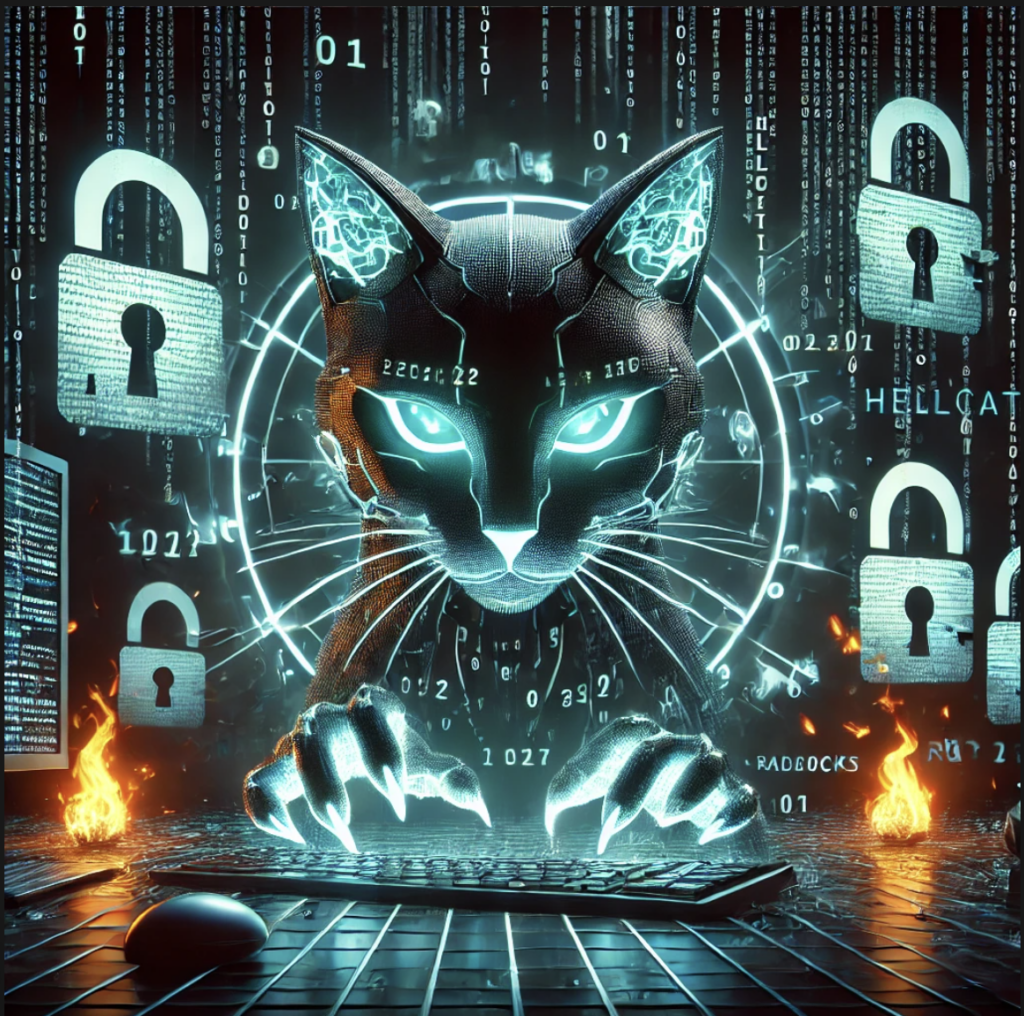Spanish telecommunications giant Telefónica, known for its operations in twelve countries and employing over 104,000 staff, has confirmed a breach of its internal ticketing system following the leak of sensitive data on a hacking forum.

Telefónica, which operates as Movistar in Spain, is the country’s largest telecommunications company. In an email statement to cybersecurity publication BleepingComputer, Telefónica admitted to the unauthorized access and outlined immediate measures taken to contain the incident.
“We have become aware of an unauthorized access to an internal ticketing system which we use at Telefónica,” the company stated. “We are currently investigating the extent of the incident and have taken the necessary steps to block any unauthorized access to the system.”
Details of the Breach
The breach involves a Jira development and ticketing server used by Telefónica for reporting and resolving internal issues. The data, totaling approximately 2.3 GB, was leaked by four attackers identified by their aliases: DNA, Grep, Pryx, and Rey. According to Pryx, the system was compromised on January 9, 2024, using stolen employee credentials. Telefónica subsequently blocked access and reset passwords for the impacted accounts.
The leaked data reportedly includes documents, tickets, and other internal information. While some of the tickets referenced customer-related data, they were linked to @telefonica.com email addresses, suggesting they may have been opened on behalf of customers rather than by customers directly. Telefónica has yet to confirm the extent of the breach or whether customer data was affected.
Notably, the attackers did not engage in extortion attempts before publicly leaking the data.
Links to Hellcat Ransomware
Three of the individuals behind the breach—Grep, Pryx, and Rey—are members of the newly launched Hellcat Ransomware group. Hellcat has already claimed responsibility for other high-profile attacks, including a breach of Schneider Electric, where 40GB of data was stolen from the company’s Jira server. The involvement of Hellcat highlights the increasing sophistication and coordination of threat actors in the modern cybersecurity landscape.

Strategic Implications for Strengthening Cybersecurity
The Telefónica breach underscores the growing threat of compromised employee credentials and the importance of robust endpoint security. With attackers leveraging legitimate access to infiltrate systems, traditional defenses such as password policies or isolated access controls are often insufficient to thwart advanced tactics.
Protecting Critical Systems with Endpoint Isolation
Advanced solutions, such as SentryBay’s Armored Client, provide a proven defense against infostealing malware. By isolating endpoints and securing access to critical systems, these technologies prevent malicious actors from exploiting sensitive credentials or extracting valuable data.
The Telefónica incident demonstrates the urgent need for businesses to:
- Adopt endpoint isolation technologies to reduce the risk of credential theft.
- Implement real-time monitoring of access to internal systems.
- Regularly audit employee credentials to identify vulnerabilities.
- Educate staff on phishing and other social engineering tactics used to compromise accounts.
The Growing Need for Proactive Cybersecurity Measures
The Telefónica breach highlights the ever-present danger posed by sophisticated threat actors, such as Hellcat Ransomware. To mitigate risks and protect sensitive systems, businesses must adopt proactive cybersecurity solutions that isolate endpoints and prevent credential-based exploits. With tools like SentryBay’s Armored Client, organizations can safeguard their infrastructure, maintain operational trust, and ensure resilience against evolving cyber threats.
In today’s digital age, robust security practices are not just optional—they are essential for protecting critical systems and sustaining customer confidence.
References:


This breach is a strong reminder of the importance of cybersecurity. Telefónica acted quickly by blocking access and resetting passwords, which is great to see. It highlights the need for employee education on phishing, stronger credential protection, and proactive measures like endpoint isolation and zero-trust strategies.
While the breach is unfortunate, it’s a valuable lesson for all organizations to strengthen defenses and stay one step ahead of evolving threats like Hellcat Ransomware. With the right tools and strategies, incidents like this can lead to smarter and more resilient systems!
Absolutely, Telefónica’s quick response highlights the importance of fast action. Employee education, strong credentials, and proactive measures like zero-trust strategies are essential for defense. While unfortunate, this breach offers valuable lessons to strengthen defenses and build more resilient systems.
Absolutely, Telefónica’s quick response highlights the importance of fast action. Employee education, strong credentials, and proactive measures like zero-trust strategies are essential for defense. While unfortunate, this breach offers valuable lessons to strengthen defenses and build more resilient systems.
Absolutely, Telefónica’s quick response highlights the importance of fast action. Employee education, strong credentials, and proactive measures like zero-trust strategies are essential for defense. While unfortunate, this breach offers valuable lessons to strengthen defenses and build more resilient systems.
Nice one Kamaldeep!
Compromised employee credentials? The need for security awareness training and exercises can never be over emphasized! It just takes one crack and systems and networks could be breached costing billions of dollars. Like you mentioned Kamaldeep, its an era of proactive cybersecurity measure and I absolutely agree with you!
You’re absolutely right, compromised employee credentials are a leading cause of breaches, and security awareness training is essential. Proactive practices and continuous learning are key to staying ahead of evolving threats.
Wonderful Post, Kamaldeep! Given the type of data that was exposed and the attack method, this breach is quite concerning. I think there is a serious security flaw, either connected to phishing or internal access controls, because the attackers utilized employee credentials that were obtained. Although the impact on customer data has not been confirmed by Telefónica, the inclusion of internal tickets and documents that may include customer-related information raises concerns. Since this breach serves as a reminder that cybersecurity isn’t just about protecting against external attacks but also about securing internal processes, maintaining a continuous cycle of improvement, and educating employees, I think that organizations must reconsider their approaches to cybersecurity to address the evolving nature of threats, especially those involving insider access and credential theft.
Thanks for highlighting the serious implications of the Telefónica breach. This incident serves as an important reminder of the need for stronger and more proactive cybersecurity defenses. As the digital landscape continues to grow more complex, companies must stay ahead of evolving threats. Implementing tools like endpoint detection and response (EDR), intrusion prevention systems (IPS) and real-time monitoring is essential. These measures help to reduce the attack surface, making it more difficult for ransomware to infiltrate systems.
The hellcat group seems to be fond of Jira. It’s quite surprising the exfiltrated such large amount of data without triggering any alert which makes me think do we even have DLP solutions integrated with widely used ticketing tools..
Whenever I hear about data breaches, I can’t help but ask: is it even possible to be fully cautious or vigilant? Security, after all, is a two-way street. You could hire the best information security or cybersecurity experts to safeguard your digital data, but the reality is that true protection also depends on the actions of employees and clients alike. Everyone involved has a role to play in practicing safe online habits to ensure a robust defense.
Insightful post! This breach is an emphasis outlining the importance of well-established cybersecurity measures at companies posed by threat actors such as Hellcat Ransomware. I agree with you in adopting proactive cybersecurity solutions that specifically adopt isolated endpoints and prevent credential-based exploits. With attackers gaining access to infiltrate systems, traditional defenses such as password policies are not sufficient. SentryBay’s Armored Client is a tool I had not previously heard. For companies looking to better establish their security roots, education on the various tools might be beneficial to ensure their priorities are all met.
Great post, Kamaldeep. It’s distressing to hear that 2.3 GB of data was exfiltrated using only stolen employee credentials, as it clearly demonstrates a fundamental lack of classification and user permission segregation within the internal network. Your suggestions are pertinent, especially the recommendation to audit employee credentials, to ensure no user has excessive permission within the network, as well as training for social engineering to prevent such credentials from being leaked in the first place.
Thanks for the insightful post! I agree that endpoint security should be strengthened as well as real-time monitoring of systems; however, I would like to incline more toward the suggestion regarding educating employees on phishing and social engineering attacks by developing a solid security awareness program. Even with all the highlighted technical solutions, a lack of a properly structured security awareness program would render everything useless.